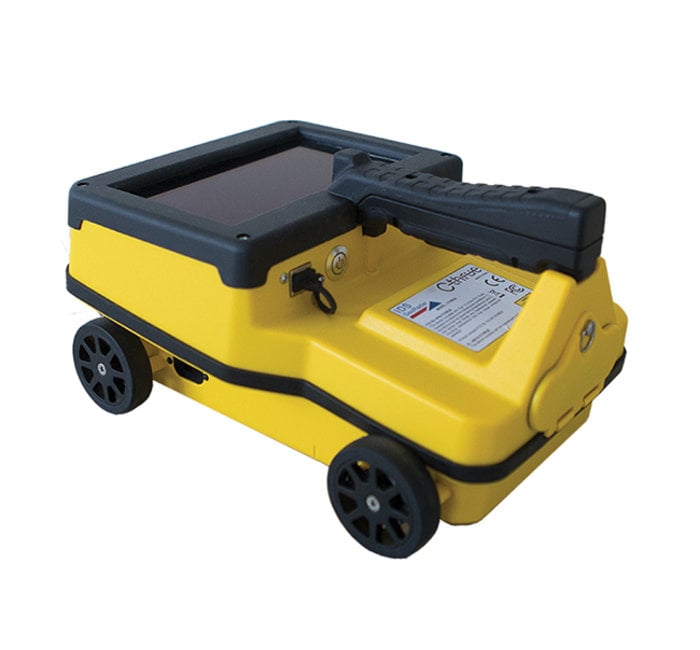RainierGPR Concrete Scanning: The Most Effective Choice for Construction Professionals
RainierGPR Concrete Scanning: The Most Effective Choice for Construction Professionals
Blog Article
The Value of Accurate Concrete Scanning in Detecting Underground Hazards
The capability to accurately identify and map these underground threats is not simply an issue of benefit but a critical aspect of making sure the safety of both building workers and the stability of the task itself. By deploying sophisticated scanning technologies and methods, experts can reveal covert threats, prevent expensive problems, and ultimately pave the means for smoother and safer building endeavors.
Advanced Scanning Technologies for Discovery
Advanced radar systems are revolutionizing the field of below ground discovery by providing unmatched precision and effectiveness. These innovative scanning modern technologies utilize ground-penetrating radar (GPR) to produce detailed photos of subsurface structures, supplying understandings right into what lies below the surface area with impressive quality. By releasing high-frequency pulses into the ground and gauging the reflections, radar systems can determine variants in material composition and identify underground hazards such as pipelines, spaces, and cords.
Among the crucial advantages of these advanced radar systems is their non-invasive nature, permitting comprehensive examinations without triggering damage to the existing frameworks. This not only makes sure the security of the surrounding setting but also decreases the demand for expensive repairs or disruptions to continuous building jobs. In addition, the real-time data given by these scanning innovations allows fast decision-making and boosts general project effectiveness.
Significance of Subsurface Mapping

Accurate subsurface mapping aids in preventing costly problems to existing below ground framework, decreasing the threat of mishaps, and keeping job timelines. It allows task managers to make educated choices regarding website preparation, devices deployment, and resource appropriation. Furthermore, subsurface mapping enables for better control amongst different groups working with a project and aids in adhering to governing needs connected to underground energy discovery.
Mitigating Dangers in Building Tasks
Reliable danger reduction techniques are necessary for guaranteeing the success and safety and security of building projects. One essential aspect of mitigating dangers in building and construction projects is thorough preparation and assessment at the first stages.
In addition, establishing clear communication networks amongst all task stakeholders and guaranteeing strict adherence to security methods are essential components of threat reduction. Normal inspections, top quality control actions, and tracking of job progression can assist in identifying and addressing any kind of emerging risks quickly. Furthermore, having backup plans in location for unexpected obstacles can considerably minimize the influence of disturbances on the job. By proactively implementing durable threat mitigation techniques, building tasks can decrease hold-ups, cost overruns, and safety occurrences, ultimately bring about effective task end results.

Protecting Against Pricey Problems and Delays
To reduce financial losses and task obstacles, efficient strategies have to be carried out to avoid costly problems and delays in construction tasks. Determining these blockages early on assists in planning the task design more successfully and preventing potential problems during excavation.
In addition, investing in training programs for building and construction workers on the importance of concrete scanning and secure excavation practices can dramatically minimize the risk of crashes and delays. Clear interaction networks between job managers, designers, and on-site workers are additionally necessary to guarantee that everyone understands the possible risks and adheres to the needed methods to avoid pricey damages. By focusing on proactive procedures like concrete scanning and advertising a culture of safety and security and understanding, building and construction jobs can decrease the financial influence of unanticipated underground obstructions and stay clear of costly delays.
Ensuring Security of On-Site Employee
By prioritizing positive actions such as extensive training programs and clear communication networks, building and construction projects can make sure the safety and security of on-site personnel amidst the possible threats spotted with concrete scanning. Correct training equips workers with the understanding and abilities required to navigate construction sites securely, specifically when threats are identified through scanning processes. Training ought to cover risk recognition, emergency situation treatments, Source and the correct utilization of individual safety equipment to mitigate risks efficiently.
Furthermore, developing clear interaction networks is crucial for disseminating information regarding determined threats without delay. This ensures that all on-site personnel understand prospective threats and can take necessary preventative measures to stay clear of mishaps. Regular security rundowns, tool kit talks, and regular updates regarding scanning results assistance maintain everyone notified and aggressive in keeping a risk-free workplace.
Moreover, implementing rigorous adherence to safety procedures and regulations, performing normal security audits, and fostering a society of safety awareness among workers are essential elements in ensuring the health of on-site workers throughout building projects - RainierGPR Concrete Scanning. Positive security measures not just safeguard employees from damage yet likewise add to the general success and performance of the job
Conclusion
Using innovative scanning technologies and subsurface mapping assists alleviate dangers in building and construction tasks, here preventing costly damages and hold-ups. It is critical for construction business to focus on the usage of specific scanning techniques to reduce prospective dangers and make sure a smooth building and construction procedure.
By proactively carrying out robust risk mitigation approaches, building and construction tasks can lessen delays, cost overruns, and safety and security events, eventually leading to successful task results. her comment is here - RainierGPR Concrete Scanning
To reduce financial losses and task troubles, efficient techniques must be applied to stop costly problems and hold-ups in construction tasks. By focusing on proactive actions like concrete scanning and advertising a culture of safety and security and understanding, construction tasks can reduce the economic effect of unexpected below ground obstructions and stay clear of costly hold-ups.
By prioritizing aggressive steps such as comprehensive training programs and clear interaction channels, building projects can make sure the safety of on-site employees amid the possible risks spotted via concrete scanning. Utilizing sophisticated scanning technologies and subsurface mapping assists minimize dangers in construction jobs, protecting against expensive problems and delays.
Report this page